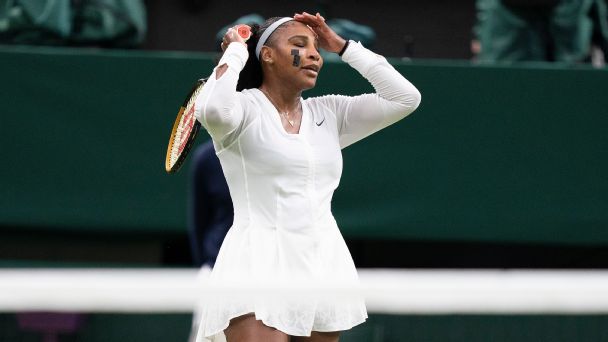LONDON — Serena Williams, last week, was preparing to face Harmony Tan in her singles comeback after a year out at Wimbledon — she was ready for almost everything: the pressure of the occasion, the physical battle, the mental test.
She was not ready for the forehand slice.
“I think I could have played any person, probably would have had a different result,” Williams said. “But I was not ready for — I knew going into it there was a lot of slice, but not so much on the forehand.”
“She’s beaten a legend.”
After three hours, 10 minutes, Harmony Tan beats Serena Williams in a first round epic#Wimbledon | #CentreCourt100 pic.twitter.com/IQst8AzXxv
— Wimbledon (@Wimbledon) June 28, 2022
Tan, a Frenchwoman ranked No. 115, sliced and diced her way to a remarkable victory over the 23-time Grand Slam champion, denying her pace and consistently putting her in an uncomfortable position.
It was the kind of tennis that hasn’t been seen on a consistent basis since the days of Pam Shriver, the former world No. 3 whose forehand slice was an integral part of her success, especially on grass.
“I’ve seen more women play the Pam Shriver hack slice forehand than I have seen in a long time,” Brad Gilbert, her ESPN colleague and former world No. 4, said on the air this week.
Shriver said she was delighted to see the forehand slice making a comeback.
“I love it,” she told ESPN.com.
“I think in this day and age, with the power and getting the ball out of the great strike position, the slice is terrific,” Shriver said. “And while the slice backhand has kind of maintained its consistency of being present through the years, I think people finally realized there’s no reason it can’t be replicated on the forehand side.
For Shriver, whose forehand slice took her to three Wimbledon semifinals — and five women’s doubles titles — choosing when to play it is key.
“Maybe for a while they didn’t think that you could hit the slice with that kind of ball coming at you and control it. I think as long as you’re committed to the slice and you get that under spin, you can do it. And maybe sometimes you don’t hit the slice off the super, super heavy topspin so much, you kind of wait for a flatter ball or one that has a little less.”
Three-time Wimbledon champion John McEnroe said he didn’t use the forehand slice much, but that it was “not a bad play.”
“I didn’t do it as much as Pam,” he said. “Every now and then, [I’d hit] slice approaches. Chip and charge, I’d kind of block it, I wouldn’t say…
Click Here to Read the Full Original Article at www.espn.com – TENNIS…

